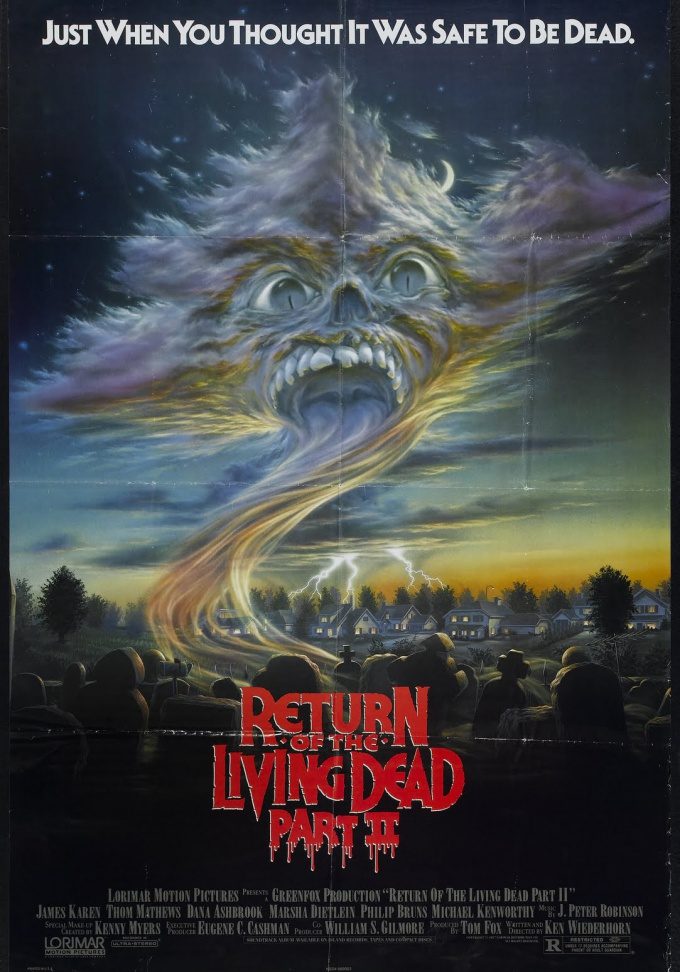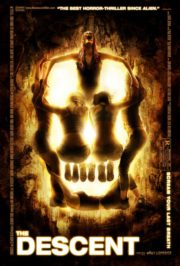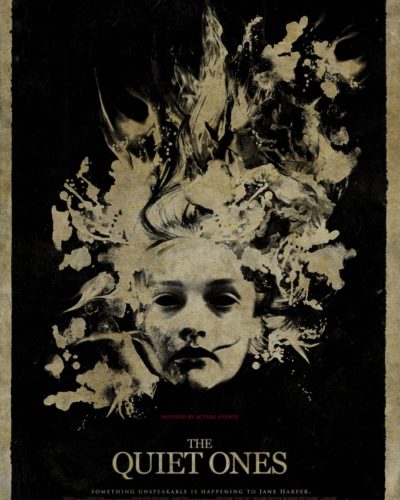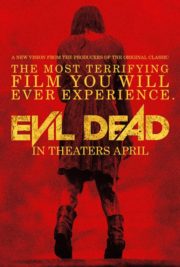A Night to Dismember: “Return of the Living Dead Part II”
In the tongue-in-cheek world of zombie cinema, “Return of the Living Dead Part II” claws its way back from the grave with the same campy vigor as its predecessor. Directed by Ken Wiederhorn in 1988, this comic horror sequel dances between fright and farce, sticking to the guts and glory of the original. Staying true to genre expectations, the film unleashes a second wave of brain-hungry undead upon an unsuspecting small town when a barrel containing Trioxin gas is accidentally opened. Equal parts morbid and mirthful, the chaos that ensues serves up a slew of spectacular creatures and questionable decisions, but can it truly sink its teeth into the heart of horror aficionados?
Haunting Humor and Hectic Hues
Atmosphere and Tone: The Fright and Light
The atmosphere of “Return of the Living Dead Part II” seems caught between two worlds, neither settling into the bleak dread of pure horror nor the riotous laughter of spoof. Intentional or not, the resulting effect is a hodgepodge of set pieces that share more with an amusement park’s haunted house than a gut-wrenching horror thriller. The suspense is undercut by moments of over-the-top comedy, leaving viewers uncertain whether to scream or chuckle. However, this hybrid nature does provide a distinct cinematic personality that can charm those with an appetite for the quirkier side of terror.
Cinematography and Visuals: Zombie Visions
The visual feast provided by the film does not stray far from the expected 1980s horror aesthetic; dimly lit scenes cast a shadow over the grotesque, and vivacious zombies painted in a palette of decay. Dutch angles and dolly zooms pepper the narrative, giving the viewers an unsteadied sensation suitable for the constant unease zombies engender. While not groundbreaking, the practical effects and makeup work deserve commendations for their gruesome detail, a trademark of the era’s creature features. Wiederhorn doesn’t reinvent the lens through which we see the undead, but he certainly knows how to frame a rotting corpse with finesse.
Sounds of the Dead
The soundtrack, an eerie blend of synth and graveyard tunes, is standard fare for the genre and time, pulsing with an energy that resonates with the flesh-eating onscreen antics. Sound plays a key role, with the moans of the undead and the screams of their supper punctuating the soundscape more effectively than the score. Selective silence is also employed, offering a momentary pause before the inevitable chaos of a zombie attack. It’s in these instances that the film truly finds its footing in the horror landscape, reminding viewers of the threats lurking just out of view.
Terrible Terrors and Singular Shocks
Acting Amongst the Undead
The film’s performances are a mixed bag of earnest horror and cheeky melodrama. Stressful situations draw out exaggerated portrayals, landing characters squarely in the realm of caricature. While commitment to the roles is apparent, this often comes at the cost of authenticity, and reactions to the encroaching horror might draw laughs rather than empathy. The zombies outshine the living, showcasing an unwavering devotion to their grotesque mannerisms and an insatiable hunger for humor and flesh.
Horror Mechanics and Madness
“Return of the Living Dead Part II” finds its stride with a blend of horror elements that veer towards the grotesque and the absurd. It leverages its place in the zombie subgenre through a combination of slapstick and scares in a marriage that somewhat undermines its potential to terrify. Less psychological and more visual, the horror comes from the visceral—oozing pus, gnashing teeth, and decomposing limbs, punctuated by the occasional jump scare that provides a temporary jolt rather than lasting dread.
Hidden Horrors: Themes and Society
The sequel lightly brushes against themes of consumerism and groupthink through its rampant hordes, paralleling the mindless masses with the era’s own teeming shopping malls and collectivist fears. However, societal commentary takes a back seat to B-movie charm, neglecting a deeper exploration of these ideas in favor of splattered brains and goofy one-liners.
The Verdict: Campy Cannibal Carnage
Ultimately, “Return of the Living Dead Part II” wobbles like a reanimated corpse, struggling to fully come to life. It flirts with horror conventions without fully committing to the chill or the comedy, leaving a work that is endearing yet forgettable in the pantheon of horror cinema. Horror traditionalists might find the tone too erratic, but those with a penchant for over-the-top antics might just find it to be a guilty pleasure.
Suitable for horror-comedy enthusiasts and viewers in search of a lighthearted fright, the film is less likely to appeal to those seeking a relentless thrill or an insidious fear to take home. Given warnings for graphic content, notably gore and body horror, it’s a piece that fits more comfortably in the company of cult classics rather than standing as a defining work of its genre.
In closing, “Return of the Living Dead Part II” is not for the horror purist, but a throwback to the late ’80s when horror didn’t take itself too seriously. Come for the zombies, stay for the camp, and remember—as one character wisely quips—”It’s not a bad question, Bert.”




